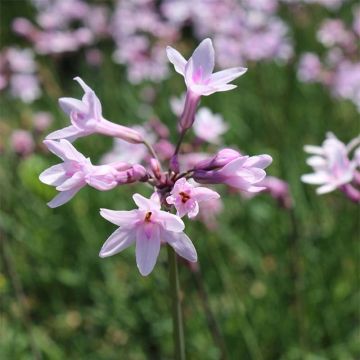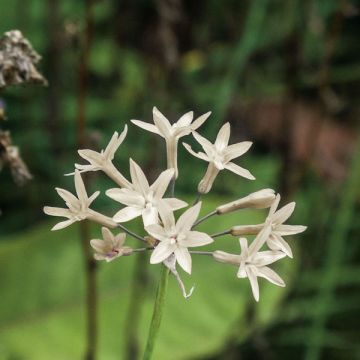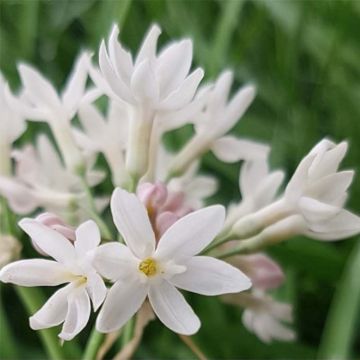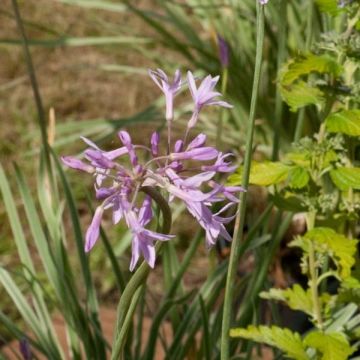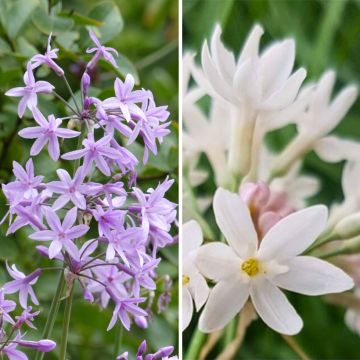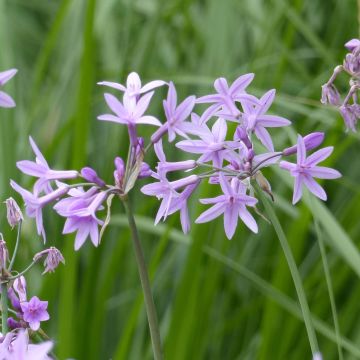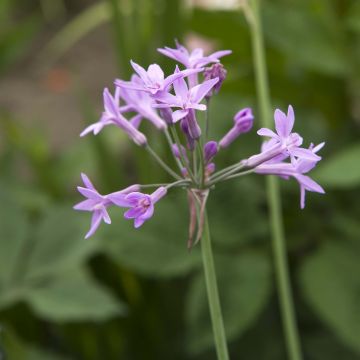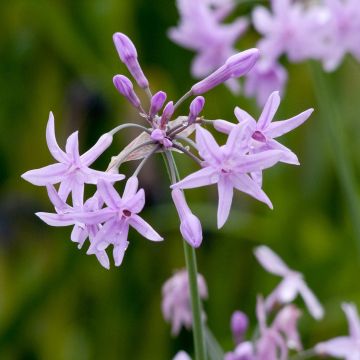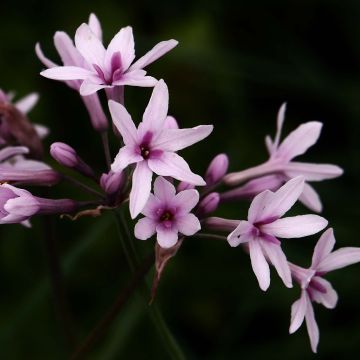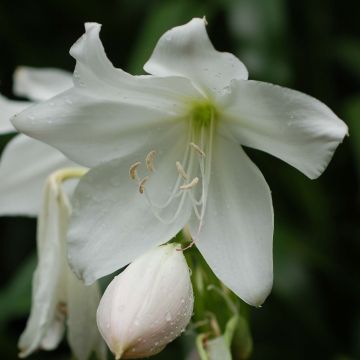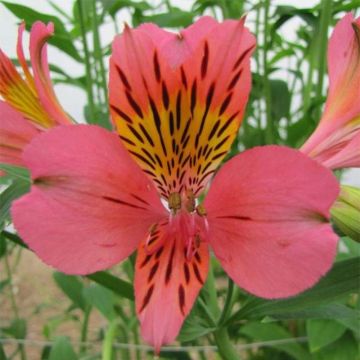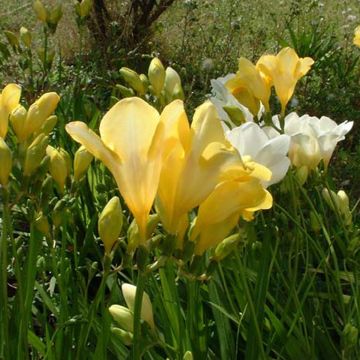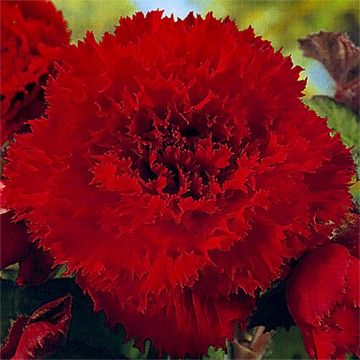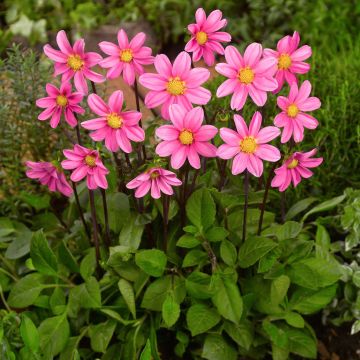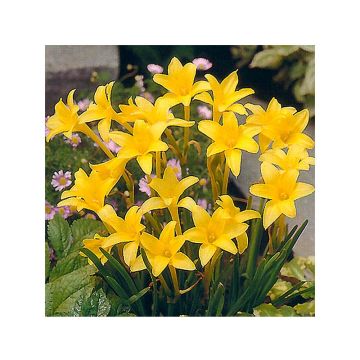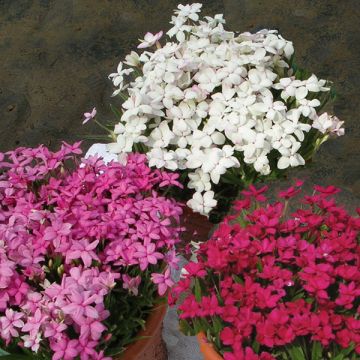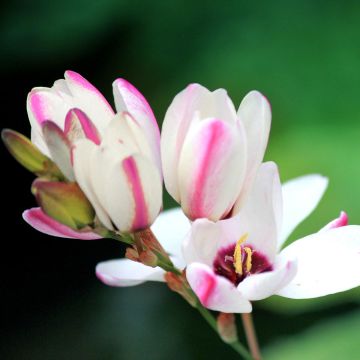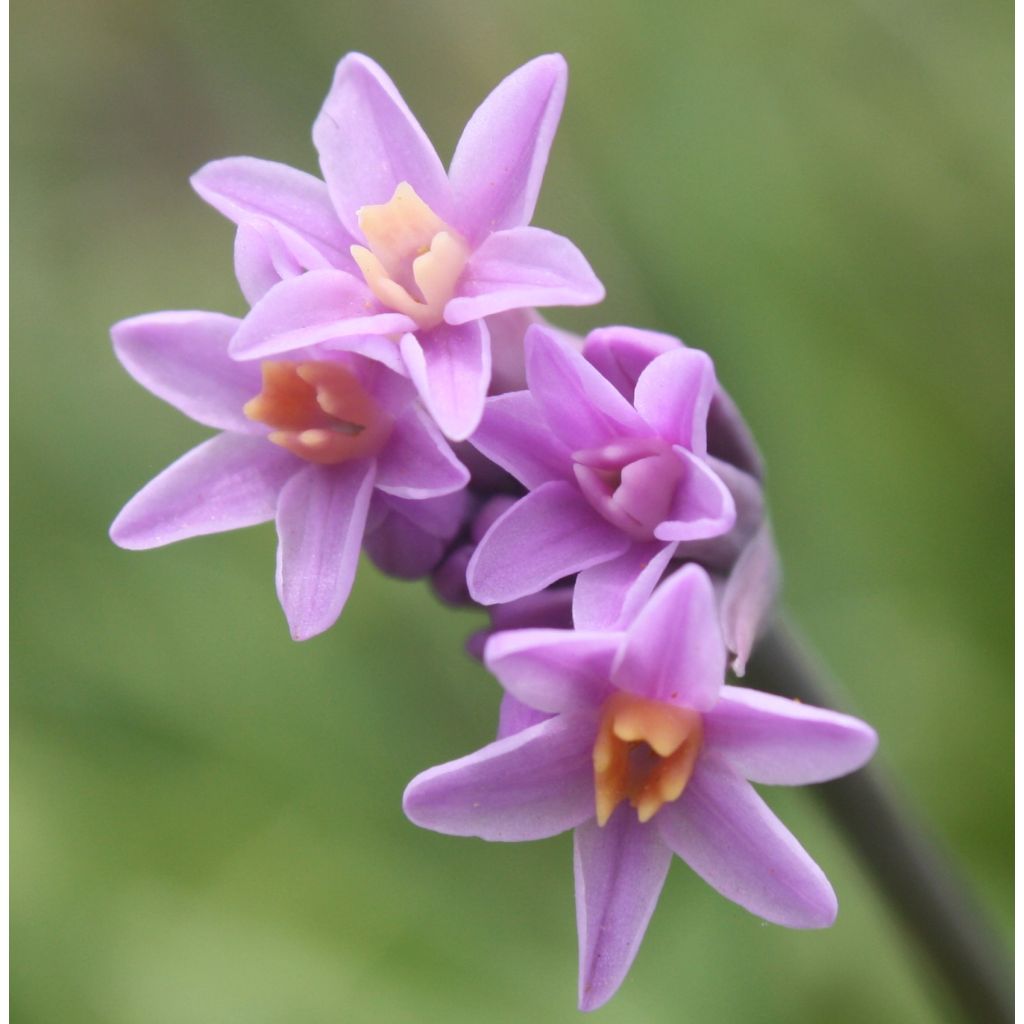

Tulbaghia violacea var. maritima x simmleri Himba
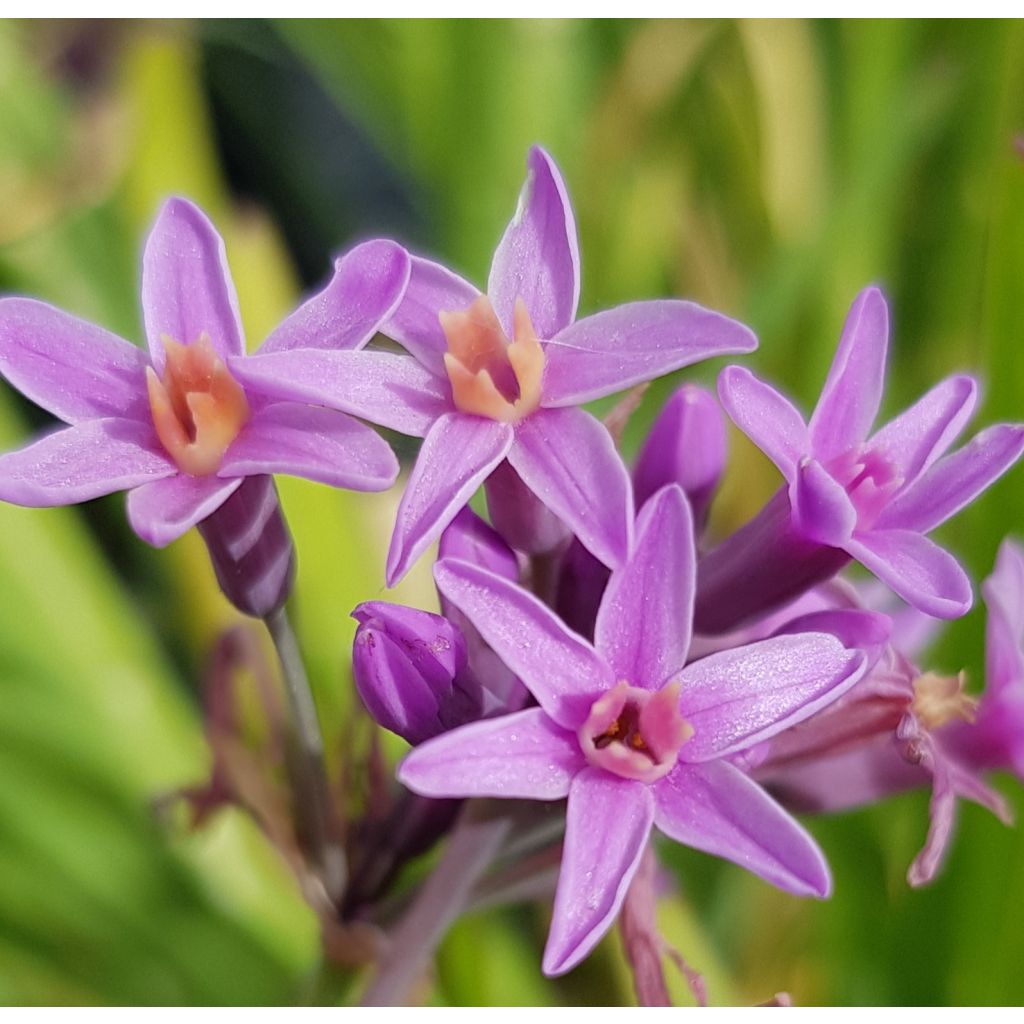

Tulbaghia violacea var. maritima x simmleri Himba
Tulbaghia violacea var. maritima x simmleri Himba
Tulbaghia violacea var. maritima x simmleri Himba
Wild garlic, Sweet Garlic
This item cannot be shipped to the selected country
Delivery charge from €5.90
Delivery charge from €5.90
More information
Delivery charge from €5.90
Delivery charge from €5.90
More information
Schedule delivery date,
and select date in basket
This plant carries a 6 months recovery warranty
More information
We guarantee the quality of our plants for a full growing cycle, and will replace at our expense any plant that fails to recover under normal climatic and planting conditions.
From €5.90 for pickup delivery and €6.90 for home delivery
Express home delivery from €8.90.
From €5.90 for pickup delivery and €6.90 for home delivery
Express home delivery from €8.90.

Does this plant fit my garden?
Set up your Plantfit profile →
Description
Tulbaghia 'Himba' is a very pretty variety of hybrid Tulbaghia. This selection stands out with its slightly taller habit, its beautifully coloured flowers ranging from pinkish-purple to orange at the centre, which are well displayed on arching stems, as well as its broader leaves with a more subtle garlic aroma. Its umbel flowers bloom for several weeks from late spring to late summer. With its resemblance to a small pinkish-purple agapanthus, it thrives in open ground in mild climates, but also in a flowering pot, to be stored during winter in our less mild regions.
The Tulbaghia hybrid Himba belongs to the Alliaceae family, just like leeks, garlic, and onions. This plant is a hybrid created by Walt in Pretoria, South Africa, who crossed the Tulbaghia violacea var. maritima with a selected cultivar of Tulbaghia simmleri. 'Himba' was introduced in 2016 by Fisk Horticulture as an ornamental plant without the strong garlic-like scent of the Tulbaghia violacea, which is often considered unpleasant. 'Himba' actually has a light scent, but much less powerful than that of its parent. It is a perennial herbaceous plant with a fleshy tuberous root that forms a clump of ribbon-like leaves, which may or may not be evergreen depending on the winter temperature. A well-protected stump can withstand short frosts to around -8°C.
Tulbaghia Himba develops quite rapidly into a spreading clump that expands over time through its rootstock. The flowering plant measures about 55-60 cm (22-24in) in height and 30-40 cm (12-16in) in width. Its long and particularly colourful flowering starts from April to June depending on the climate and continues until summer. In milder regions, it can bloom almost all year round. Clumps of leaves emerge from outward arching flower stalks, bearing false umbels of tubular flowers that open into star-shaped blooms with 6 petals in a deep pinkish-purple colour surrounding an orange centre. The flowers emit a sweet honey scent mixed with a slight garlic smell coming from the plant. The foliage is quite narrow, upright, linear, and grey-green in colour, but flexible enough to arch slightly. It is slightly aromatic and releases a faint garlic smell that is noticeable in warm weather.
Tulbaghia Himba is a very attractive plant appreciated for its prolonged flowering, which brings a lovely touch of colour and exoticism to the garden or patio. It can be used as a border plant or in a rockery, replacing agapanthus or complementing them by choosing from the more compact varieties (Agapanthus Silver Moon, Golden Drop...). Tulbaghia is quite sensitive, especially in wet soil during winter, so it is often preferable to grow it in a pot, except in very mild climates. This plant thrives outdoors in summer, exposed to light but not excessive sunlight. You can use finely chopped leaves in your salads or even a few flowers. It is a good coastal plant that tolerates sandy soils and sea spray. The most suitable climate for it is a mild oceanic type. In Mediterranean regions, it will require regular watering in summer.
Tulbaghia violacea var. maritima x simmleri Himba in pictures
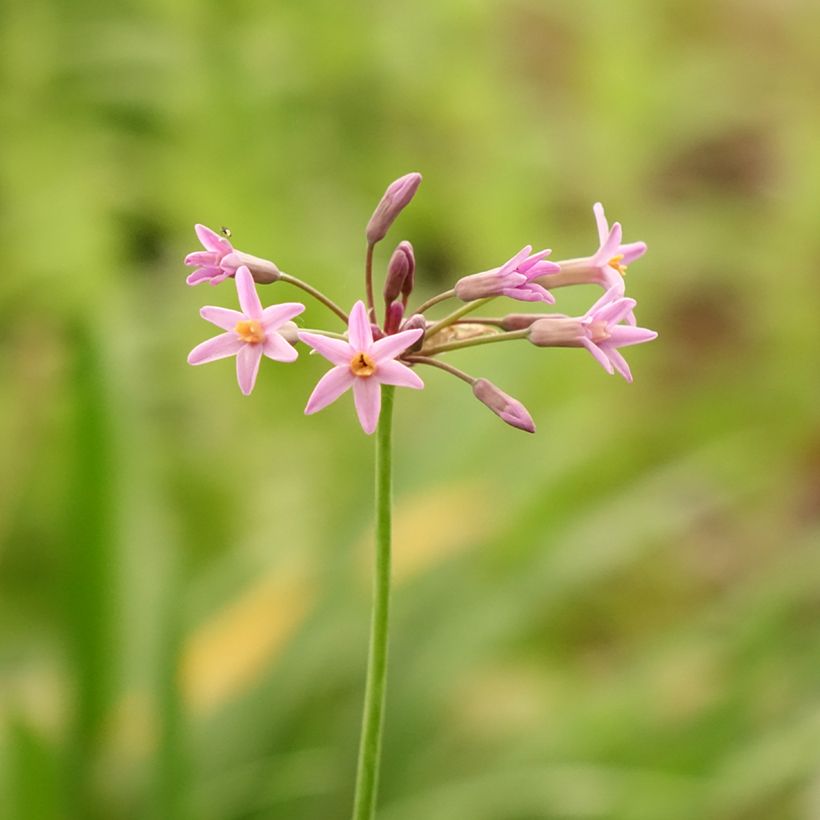

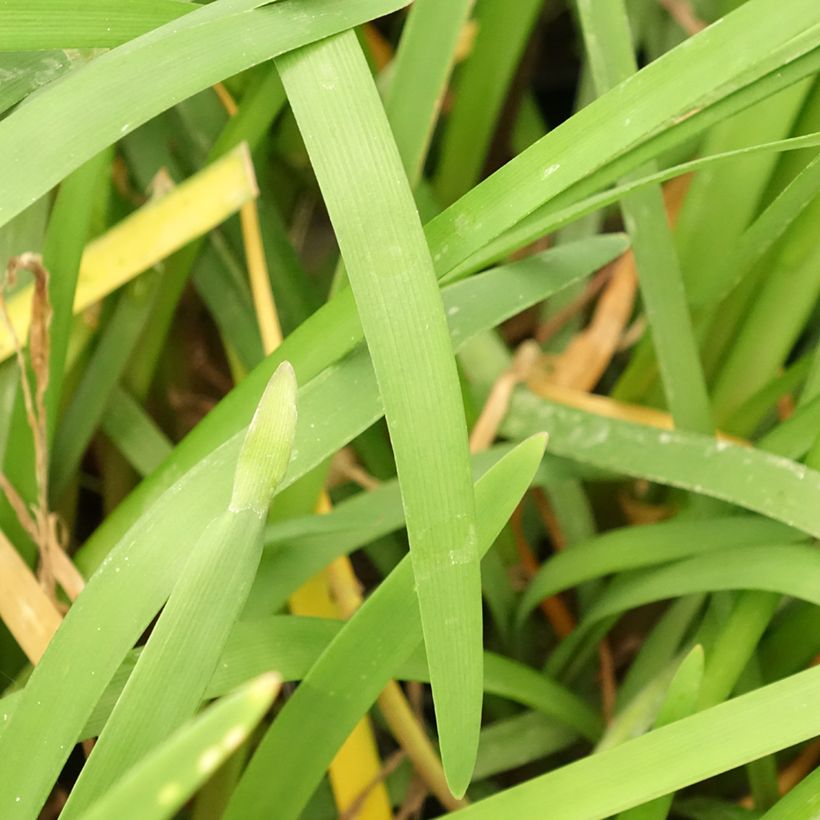

Plant habit
Flowering
Foliage
Botanical data
Tulbaghia
violacea var. maritima x simmleri
Himba
Alliaceae
Wild garlic, Sweet Garlic
South Africa
Other Tulbaghia
Planting and care
Tulbaghia appreciates well-drained soils, whether they are slightly acidic, neutral or slightly calcareous. It prefers light and sandy soils. Its hardiness, -12°C (10.4°F) will be reduced in wet and poorly drained soils in winter. A mixture of leaf compost and sand makes a good substrate for its cultivation. Choose a sunny or, at most, partially shaded position in the hottest and sunniest regions. It appreciates moist soils during its flowering period (spring-summer), but drier in autumn and winter. It tolerates sea spray perfectly. Repot your young plants in a pot of around 20 cm containing a third compost, a third leaf compost, and a third sand. Leave them in a warm and well-lit place (but without direct sunlight) until the last frosts. You can then take your pot outside. Bring them indoors at the beginning of autumn when temperatures start to drop. In the ground, space the plants 20cm (8in) apart. In autumn, cut back the clumps to 3 or 4 cm (1 or 2in) from the ground and mulch heavily to protect from the cold. In a pot: during the growth period, water two to three times a week and apply liquid fertiliser at least every 15 days to achieve good flowering. In winter, reduce watering. Repot every three years.
Planting period
Intended location
Care
-
, onOrder confirmed
Reply from on Promesse de fleurs
Bulbs to grow in pots
Haven't found what you were looking for?
Hardiness is the lowest winter temperature a plant can endure without suffering serious damage or even dying. However, hardiness is affected by location (a sheltered area, such as a patio), protection (winter cover) and soil type (hardiness is improved by well-drained soil).

Photo Sharing Terms & Conditions
In order to encourage gardeners to interact and share their experiences, Promesse de fleurs offers various media enabling content to be uploaded onto its Site - in particular via the ‘Photo sharing’ module.
The User agrees to refrain from:
- Posting any content that is illegal, prejudicial, insulting, racist, inciteful to hatred, revisionist, contrary to public decency, that infringes on privacy or on the privacy rights of third parties, in particular the publicity rights of persons and goods, intellectual property rights, or the right to privacy.
- Submitting content on behalf of a third party;
- Impersonate the identity of a third party and/or publish any personal information about a third party;
In general, the User undertakes to refrain from any unethical behaviour.
All Content (in particular text, comments, files, images, photos, videos, creative works, etc.), which may be subject to property or intellectual property rights, image or other private rights, shall remain the property of the User, subject to the limited rights granted by the terms of the licence granted by Promesse de fleurs as stated below. Users are at liberty to publish or not to publish such Content on the Site, notably via the ‘Photo Sharing’ facility, and accept that this Content shall be made public and freely accessible, notably on the Internet.
Users further acknowledge, undertake to have ,and guarantee that they hold all necessary rights and permissions to publish such material on the Site, in particular with regard to the legislation in force pertaining to any privacy, property, intellectual property, image, or contractual rights, or rights of any other nature. By publishing such Content on the Site, Users acknowledge accepting full liability as publishers of the Content within the meaning of the law, and grant Promesse de fleurs, free of charge, an inclusive, worldwide licence for the said Content for the entire duration of its publication, including all reproduction, representation, up/downloading, displaying, performing, transmission, and storage rights.
Users also grant permission for their name to be linked to the Content and accept that this link may not always be made available.
By engaging in posting material, Users consent to their Content becoming automatically accessible on the Internet, in particular on other sites and/or blogs and/or web pages of the Promesse de fleurs site, including in particular social pages and the Promesse de fleurs catalogue.
Users may secure the removal of entrusted content free of charge by issuing a simple request via our contact form.

































